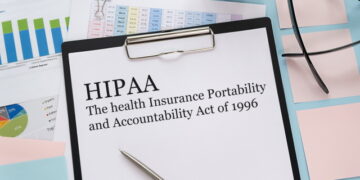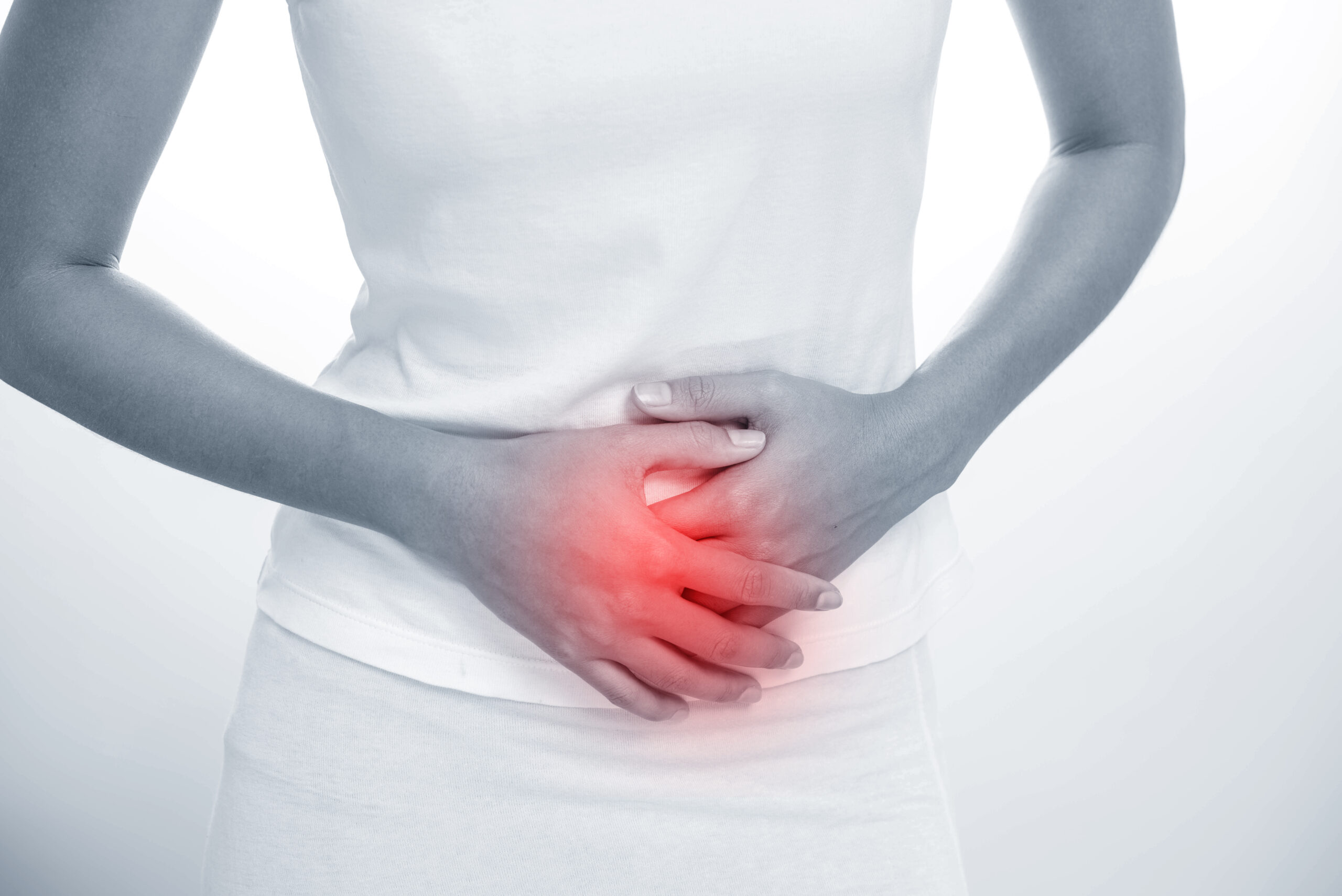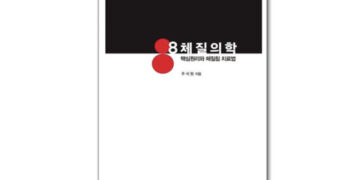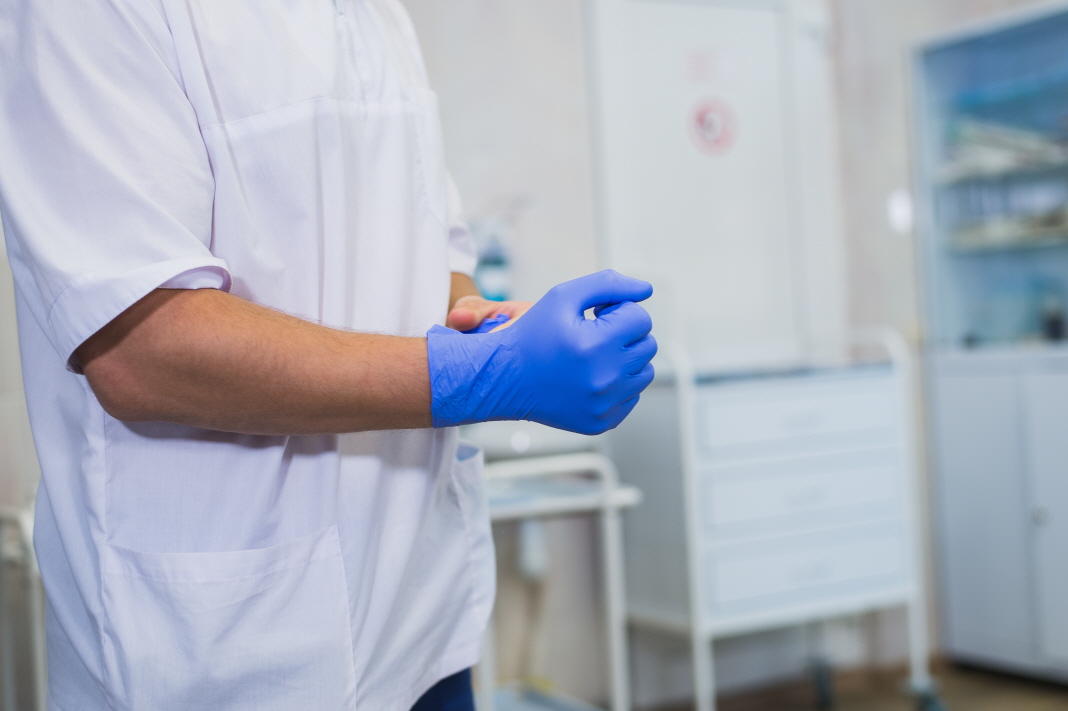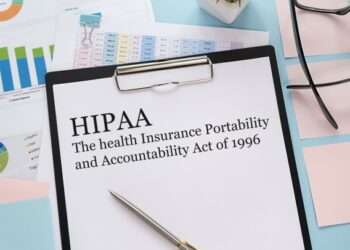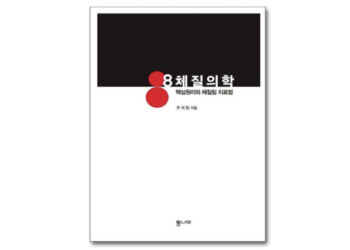표준 예방조치는 일반 예방조치에서 발전한 것이다. 일반 예방조치는 미국질병통제예방센터가 1987 년에 혈행성 병원체가 의료 보건 종사자에게 전파되는 것을 예방하기 위해 최초로 권고하였다.
1996 년에, 일반 예방조치의 개념이 확충되었으며, 표준 예방조치로 새로히 명명되었다. 표준 예방조치의 목적은 보편적인 전염성 병원체가 의료 보건 시설의 의료 보건 종사자, 환자, 방문객에게 전파되는 것을 예방하기 위한 것이다.
- 웹 페이지 참조: http://www.cdc.gov/HAI/prevent/ppe.html
환자를 진료할 때는 눈물과 땀을 제외하고, 분비물과 배설물을 포함한 해당 환자의 혈액이나 체액에 전염성 병원체가 있을 수 있다고 가정해야 한다.
그러므로 반드시 개인보호장구(PPE) 사용을 포함하여 적절한 예방조치를 취해야 한다. 개인보호장구가 필요할 경우, 어떤 유형의 장비를 사용할지는 환자의 임상적으로 상호작동하는 유형, 합리적으로 예상하는 혈액 및 체액과의 접촉 정도, 그리고 해당 환자가 접촉 또는 작은 방울 주의(Contact or Droplet Precautions), 혹은 공기매개 감염 격리(Airborne Infection Isolation)와 같은 격리 예방에 처해졌는지 여부에 의해 결정된다. (60)
개인보호장구(PPE)는 미국직업안전위생관리국(OSHA)이 정의한 바와 같이, “직원들이 착용하여 전염성 물질을 예방하는 특수 의복 또는 장비”이다. (61)
OSHA 는 업무 현장의 위생과 안전 법규를 발표한다. 이러한 법규는 의료 보건 종사사가 혈행성 병원체와 결핵균에 노출되지 않도록 보호하기 위해 의료 보건 시설에서의 PPE 사용을 요구한다.
하지만 OSHA 의 일반 의무 조항에 따르면, 어떠한 잠재적 전염병에 노출될 위험이 있을 경우 PPE 를 사용하도록 요구된다. 고용주는 반드시 직원들에게 적절한 PPE 를 제공해야 하며, 사용한 PPE 는 폐기되거나, 재사용 가능한 경우, 사용 후 적절히 세척, 수리 및 보관되는 것을 보장해야 한다. 고용주는 반드시 직원들이 사용하는 PPE 의 구입 및 세척 비용을 책임져야 한다.
미국질병통제예방센터(CDC)는 전염성 질병에 대한 노출을 예방하기 위해 언제 어떤 PPE 를 사용해야 하는지 권고 사항을 발표한다.
미국직업안전위생관리국(OSHA)은 업무 현장의 위생과 안전 법규를 발표한다.
개인보호장구(PPE)에 관해서, 고용주는 반드시:
- 직원들에게 무료로 적절한 개인보호장구를 제공해야 한다.
- 개인보호장구가 폐기되거나, 재사용 가능한 경우, 사용 후 적절히 세척, 수리 및 보관되는 것을 보장해야 한다. OSHA 는 또한 어느 상황에 어떤 PPE 를 사용해야 할 지 구체적으로 명시한다. 미국질병통제예방센터는 의료 보건 종사자가 언제, 어떤 경우, 어떻게 PPE 를 사용해야 하는지 권고한다.
의료 보건 시설에서 사용되는 PPE 유형: (62)
- 장갑 – 손 보호
- 의사 가운/에이프론/실험실 가운 – 피부 및/또는 의복 보호
- 마스크 및 호흡기– 전염성 물질로부터 입/코 보호
- 보호경 – 눈 보호
- 얼굴가리게(face shields) – 얼굴, 입, 코, 눈 보호
장갑은 의료 보건 시설에서 가장 보편적으로 사용되는 PPE 이다. 점막, 혈액 혹은 기타 잠재적 전염 물질과 접촉하게 되는 대부분의 환자 간호 활동에는 비살균 니트릴 또는 비닐 장갑의 사용이 요구된다. 라텍스 장갑은 환자 혹은 의료 보건 종사자의 알레르기 반응이 있을 수 있으므로 사용을 피한다.
장갑은 사용자의 손에 적절히 맞아야 한다. 즉, 너무 느슨하거나 꽉 조이지 않아야 한다. 그리고 쉽게 찢어지거나 손상되지 않아야 한다. 장갑은 의료 보건 종사자가 전염성 물질과 접촉하지 않도록 보호한다. 하지만 장갑은 일단 오염되면 전염성 물질을 장갑 착용자 본인, 기타 환자 혹은 환경 표면에 전파하는 도구가 된다. 장갑은 침 찔림 부상을 예방하지 않는다.
표준 예방조치에 따르면, 혈액, 체액, 분비물, 배설물, 또는 오염된 물품을 만지거나 점막 및 온전하지 않은 피부를 만질 경우 장갑을 껴야 한다. (62)
자침할 때 장갑을 껴야하는가?
일반적으로 자침할 때는 장갑을 낄 필요는 없다. 하지만 의료 보건 절차에서 혈액 내지 기타 잠재적 전염 물질이 있을 것으로 예상되는 경우, 그리고 점막 부위에서 치료를 실시할 때는 장갑을 껴야 한다. (63,64)
미국직업안전위생관리국(OSHA)의 법규는 백신 접종 시, 백신을 접종해 주는 사람이 잠재적 전염성 체액과 접촉할 가능성 혹은 손에 개방성 병변(open lesions)이 있지 않는 한, 장갑을 끼는 것을 요구하지 않는다. (65)
세계보건기구(WHO)에 따르면, 의료 보건 종사자의 피부가 온전할 경우, 일상적 피내, 피하, 그리고 근육내 주사 시 장갑을 끼지 않아도 된다. (46) 침술 치료의 자침은 피하 혹은 근육내 주사와 유사하다. 자침 시 출혈하는 경우가 극히 적으므로, 장갑을 낄 필요는 없다.
상기 설명은 OSHA 가 미국보훈국(Department of Veterans Affairs) 국장이 2005 년 5 월 11 일 침술 치료 시 장갑 사용에 관해 문의한 것에 답한 서신의 맥락과 같다.
WHO 에 따르면, 침술에 사용되는 침 관통에 관한 설명은 피하 혹은 근육내 주사와 유사하다. 일반적으로, OSHA 는 피하 또는 근육내 주사를 실시할 때, 출혈로 인해 손이 혈액 혹은 기타 잠재적 전염 물질과 접촉할 것으로 예상하지 않는 한, 장갑을 낄 필요가 있다고 보지 않는다. 침술도 이와 마찬가지로, 혈액과의 접촉을 예상하지 않으면 장갑을 낄 필요가 없다. (66)
하지만 점막이나 점막 근처에 소재하기 때문에 자침 시 장갑을 껴야하는 혈 자리가 몇 개 있다. 이러한 혈 자리는 Ren 1 (會陰, 회음), Du 1 (長强, 장강), Du 27 (兌端, 태단), Du 28 (齗交), 금진(金津)과 옥액(玉液)(M-HN-20)이다.
발침할 때 장갑을 껴야 하는가?
일반적으로, 발침할 때 장갑을 낄 필요는 없다. 대부분의 침술 치료 발침 시의 출혈 위험은 4% 미만이다. (67) 일반적으로, 발침할 때 장갑을 낄 필요는 없지만, 두피 혹은 귀에 자침하는 유형 중 일부는 출혈 위험이 높아질 수 있다. OSHA 는 “발침 후 직원이 자침 부위를 닦고 거즈를 놓아야 한다면, 그리고 이 때 출혈을 예상하는 경우, 반드시 장갑을 껴야 한다”라고 밝혔다. (66)
자침과 마찬가지로, 점막이나 점막 근처에 소재한 혈 자리에서 발침할 경우 장갑을 껴야 한다.
OSHA BBP 표준 29 CFR 1910.1030 에 의하여, 침구사는 반드시 언제 장갑을 껴야할 필요가 있는지에 관한 고용주 방침과 절차를 준수해야 한다. OSHA 에 따르면, “고용주는 반드시 이 조항(29 CFR 1910.1030(c))을 실시할 방침을 설립해야 한다. 침술을 시행하는 직원은 장갑을 껴야하는지 여부를 결정하지 않는다.”(68) 자영업을 하는 침구사는 모든 절차에 장갑 사용을 해야 하는지 여부에 관한 지침을 준비해야 한다.
장갑 착용에 관한 미국질병통제예방센터의 추가 지침: (60)
- 시행할 작업에 적합한 맞기(fit)와 내구력이 있는 장갑을 낀다.
- 환자를 직접 접촉할 때는 일회용 의료 검사용 장갑을 낀다.
- 환자 및/또는 의료 기기, 혹은 환경(진료실 표면)과 접촉한 후 장갑을 벗는다.
- 같은 장갑을 끼고 환자를 한 명 이상 치료하지 않는다.
- 손 오염을 예방하기 위해 적절한 기법을 사용하여 장갑을 벗는다. 장갑을 벗은 후 손을 씻어야 한다는 점에 유의한다. 의료 보건 종사자를 보호하기 위해 장갑 사용과 함께 적절한 손 위생을 실행하는 것이 매우 중요하다. (61)
보호경: 보호경은 눈을 보호한다. 개인적인 처방 안경은 최상의 눈 보호를 제공하지 못하며, 대부분의 경우 보호경 대신으로 사용해서는 안 된다. 보호경은 눈 위와 눈 주위에 편안하게 걸칠 수 있어야 한다. 보호경은 혈액 이나 기타 잠재적 전염 물질이 눈에 튀는 것을 예방한다. 그리고 의료 보건 종사자의 오염된 손이 눈을 만지는 것을 방지한다. 보호경이나 안면 가리개는 혈액, 체액, 분비물, 혹은 배설물이 튀거나 뿌려질 가능성이 있는 환자 간호 활동에 사용해야 한다. 이러한 침술 및 동양의학 실행의 예로는 습 부항(wet cupping) 요법을 포함한 출혈 기법(bleeding techniques)이 있다.
실험실 가운: 실험실 가운은 개인보호장구이며, 실험실에서 화학물질과 생물학적 제제를 취급할 때 피부와 옷을 화학물질/생물학적 제제의 튐 혹은 엎질러짐으로부터 보호하기 위해 반드시 착용해야 한다. 적절한 실험실 가운은 단추를 모두 잠그고 소매를 모두 내려야 한다.
오염물질이 전파되는 것을 예방하기 위해,사무실, 휴게실, 라운지와 같은 공공장소에서는 실험실 가운을 입지 말아야 한다. 실험실 가운은 위험 물질을 전파하고 이러한 공공장소를 오염시킬 수 있다. 실험실 가운은 집(household)에 있는 다른 사람들을 오염시킬 수 있으므로 집에 가져가지 말아야 한다. 집에서 실험실 가운을 세탁하거나 다른 옷들과 같이 세탁하지 말아야 한다. 개인보호장구로 사용된 실험실 가운은 의료 혹은 실험실 세탁 서비스 업체가 세탁해야 한다. (61)
개인보호장구(PPE) 착용 외에, 침구사는 안전한 작업 실무를 실행해야 한다. 손을 얼굴에서 멀리하고 PPE 를 만지거나 조절하지 않음우로서 자신을 오염시키지 않는다. 장갑이 찢어지면 벗어 버리고 새 장갑을 끼기 전에 손 위생 절차(손씻기)를 실시한다. 그리고 오염이 번지는 것을 방지하기 위해 오염된 장갑으로 표면이나 물품을 만지지 않는다.
침 찔림 정보
- (http://www.cdc.gov/niosh/docs/2000-108/) (69)
침에 찔리거나 침구 부상 또는 환자의 혈액이나 기타 잠재적 전염 물질에 노출된 경우, 다음 단계를 준수한다.
- 비누와 물로 침에 찔린 장소와 베인 곳을 씻는다.
- 물로 코, 입, 피부에 튄 오염물을 세척한다.
- 깨끗한 물, 생리 식염수 또는 무균 세척제로 눈을 세척한다.
- 최대한 빨리 면허를 소지한 의사의 진료를 받는다. 주의: 뉴욕과 같은 일부 주에서는 침에 찔린 사람이 침 찔림 사고 발생 후 2 시간 이내에 의료 검사 평가를 받도록 권장한다. (70,71) (침술 및 동양의학 대학 평의회(CCAOM) www.ccaom.org © 2015 by the Council of Colleges of Acupuncture and Oriental Medicine. 2017 년 5 월 19 일에 검토 및 업데이트 되었음.)
<저작권자ⓒHani Times, 무단 전재-재배포 금지>
참고 자료
1. World Health Organization. WHO Guidelines on Hand Hygiene in Health Care. http://whqlibdoc.who.int/publications/2009/9789241597906_eng.pdf. 2009. Accessed
December 2012
2. Centers for Disease Control and Prevention. Hand Hygiene in Healthcare Settings –Core. Centers for Disease Control. http://www.cdc.gov/handhygiene/download/hand_hygiene_core.pdf. 2002. Accessed December 2012.
3. Centers for Disease Control and Prevention. Division of Media Relations.Why is handwashing important? Division of Media Relations.
http://www.cdc.gov/media/pressrel/r2k0306c.htm. March 2000. Accessed December 2012.
4. Steere AC. Hand washing practices for prevention of nosocomial infections. Ann Intern Med 1975;83:683-90.
5. Domowitz LG. Hand washing techniques in paediatric intensive care unit. Am J Dis Child 1987;141:633-85.
6. Thompson BL, Dwyer DM, Ussery XT, Denman S. Hand washing and glove use in long-term care facility. Infect Cont Hosp Epidemol 1997;18:97-103.
7. Ojajärvi J, Mäkelä P, Rantasalo I. Failure of hand disinfection with frequent hand washing: a need for prolonged field studies. J Hyg (Lond)1977;79:107–19.
8. Larson EL, Eke PI, Wilder MP, Laughon BE. Quantity of soap as a variable in handwashing. Infect Control 1987;8:371–5.
9. Larson E, Leyden JJ, McGinley KJ, Grove GL, Talbot GH. Physiologic and microbiologic changes in skin related to frequent skin related to frequent handwashing.Infect Control. 1986 Feb;7(2):59-63.
10. Larson EL, Eke PI, Laughon BE. Efficacy of alcohol-based hand rinses under frequent-use conditions. Antimicrob Agents Chemother 1986;30:542–4.
11. Larson EL, Laughon BE. Comparison of four antiseptic products containing chlorhexidine gluconate. Antimicrob Agents Chemother 1987;31:1572–4.
12. Boyce JM, Pittet D. Guideline for Hand Hygiene in Health-Care Settings; Recommendations of the Healthcare Infection Control Practices Advisory Committee and the HICPAC/SHEA/APIC/IDSA Hand Hygiene Task Force. MMWR Recommendations and Reports, October 25, 2002/51(RR16);1-44.
13. Rotter M. Hand washing and hand disinfection [Chapter 87]. In: Mayhall CG, ed. Hospital epidemiology and infection control. 2nd ed. Philadelphia, PA: Lippincott Williams &
Wilkins, 1999.
14. Pittet D et al. Infection control as a major World Health Organization priority for developing countries. J Hosp Infect. 2008 Apr;68(4):285-92. doi: 10.1016/j.jhin.2007.12.013. Epub 2008 Mar 10.
15. Izquierdo-Cubas F et al. National prevalence of nosocomial infections, Cuba 2004. Journal of Hospital Infection, 2008, 68:234–240.
16.Coello R et al. Prospective study of infection, colonization and carriage of methicillin-resistant Staphylococcus aureus in an outbreak affecting 990 patients. European Journal of Clinical Microbiology, 1994, 13:74–81.
17.Mermel LA, Josephson SL, Dempsey J, Parenteau S, Perry C, Magill N. Outbreak of Shigella sonnei in a clinical microbiology laboratory.J Clin Microbiol 1997;35:3163–5.
18. Shlenschlaeger J, Friberg J, Ramsing D, Agner T. Temperature dependency of skin susceptibility to water and detergents. Acta Derm Venereol 1996;76:274–6.
19. Emilson A, Lindberg M, Forslind B. The temperature effect of in vitro penetration of sodium lauryl sulfate and nickel chloride through human skin. Acta Derm Venereol
1993;73:203–7.
20.Ansari SA, Springthorpe VS, Sattar SA, Tostowaryk W, Wells GA. Comparison of cloth, paper, and warm air drying in eliminating viruses and bacteria from washed hands. Am J Infect Control 1991;19:243–9.
21. Larson EL, McGinley KJ, Foglia A, Leyden JJ, Boland N, Larson J, Altobelli LC, Salazar-Lindo E. Handwashing practices and resistance and density of bacterial hand flora on two
pediatric units in Lima, Peru. Am J Infect Control 1992;20:65–72.
22. Pittet D et al. Infection control as a major World Health Organization priority for developing countries. Journal of Hospital Infection, 2008, 68:285–292.
23. Larson EL et al. Changes in bacterial flora associated with skin damage on hands of health care personnel. American Journal of Infection Control, 1998, 26:513–521.
24. Taylor LJ. An evaluation of handwashing techniques. Nursing Times 1978:54–5.
25. Ojajärvi J. An evaluation of antiseptics used for hand disinfection in wards. J Hyg (Lond) 1976;76:75–82.
26. Price PB. The bacteriology of normal skin: a new quantitative test applied to a study of the bacterial flora and the disinfectant action of mechanical cleansing. Journal of Infectious Diseases, 1938, 63:301–318.
27. Montes LF, Wilborn WH. Location of bacterial skin flora. British Journal of Dermatology. 1969, 81(Suppl. 1):23–26.
28. Wilson M. Microbial inhabitants of humans: their ecology and role in health and disease. New York, NY, Cambridge University Press, 2005.
29. Rayan GM, Flournoy DJ. Microbiologic flora of human fingernails. Journal of Hand Surgery (America).1987, 12:605–607.
30. Evans CA et al. Bacterial flora of the normal human skin. Journal of Investigative Dermatology. 1950, 15:305–324.
31. Kampf G, Kramer A. Epidemiologic background of hand hygiene and evaluation of the most important agents for scrubs and rubs. Clinical Microbiology Review, 2004, 17:863–893.
32.Lark RL VanderHyde K, Deeb GM, Dietrich S, Massey JP, Chenoweth C.An outbreak of coagulase-negative staphylococcal surgical-site infections following aortic valve
replacement. Infect Control Hosp Epidemiol. 2001 Oct;22(10):618-23.
33. Bode Science Center. Transient skin flora. http://www.bode-science-center.com/center/glossary/transient-skin-flora.html. Accessed December 2012
34. Hoffman PN, Cooke EM, McCarville MR, Emmerson AM. Microorganisms isolated from skin under wedding rings worn by hospital staff. Br Med J 1985;290:206–7.
35. Jacobson G, Thiele JE, McCune JH, Farrell LD. Handwashing: ring wearing and number of microorganisms. Nurs Res 1985;34:186–8.
36. Hayes RA, Trick WE, Vernon MO, et al. Ring use as a risk factor (RF) for hand colonization in a surgical intensive care unit (SICU) [Abstract K-1333]. In: Program and abstracts of the 41st Interscience Conference on Antimicrobial Agents and Chemotherapy. Washington, DC: American Society for Microbiology, 2001.
37. Harris AD, Samore MH, Nafziger R, DiRosario K, Roghmann MC, Carmeli Y. A survey on handwashing practices and opinions of healthcare workers. J Hosp Infect. 2000
Aug;45(4):318-21.
38. Boyce, J.M., et al., Proceedings of the 9th Annual Society for Health Care Epidemiology of America Meeting, April 18-20, 1999, San Francisco, CA
39. 29 CFR 1910.1030(d)(2)(iv), which specifies that “when provision of hand washing facilities is not feasible, the employer shall provide either an appropriate antiseptic hand cleanser in conjunction with clean cloth/paper towels or antiseptic towelettes. When antiseptic hand cleansers or towelettes are used, hands shall be washed with soap and running
water as soon as feasible.”
40. Khawaja R, Sikandar R, Qureshi R, Jareno R. Routine Skin Preparation with 70% Isopropyl Alcohol Swab: Is it Necessary before an Injection? Quasi Study. J Liaquat U Med Health Sciences (JLUMHS). 2013;12(2) (May-Aug):109-14.
41. Dann TC. Routine skin preparation before injection: an unnecessary procedure. Lancet 1969; 2: 96-7.
42. Koivisto JA, Felig P. Is skin preparation necessary before insulin injection? Lancet 1978; 1: 1072-1073.
43.McCarthy JA, Covarrubis B, Sink P. Is the traditional alcohol wipe necessary before an insulin injection? Diabetes Care 1993; 16(1); 402.
44. Workman B. Safe injection techniques. Nursing Standard 1999; 13(39): 47-53.
45. Rotter M. Hand washing and hand disinfection. Mayhall CG. Ed Hospital epidemiology and infection control, 2nd Edition. Philadelphia. Lippincott, 1999.
46. World Health Organization. WHO best practices for injections and related procedures toolkit. http://whqlibdoc.who.int/publications/2010/9789241599252_eng.pdf. WHO
Library Cataloguing-in-Publication Data. 2010. Accessed December 2012.
47. Modlin, John F., et al. Vaccinia (Smallpox) Vaccine Recommendations of the Advisory Committee on Immunization Practices (ACIP), 2001. MMWR June 2001 50 (RR10): 1-25.
48. Mallett J, Bailey C. The Royal Marsden NHS Trust Manual of Clinical Procedures (5th ed.) Blackwell Science: London 1996.
49. Lawrence JC. The use of alcoholic wipes for disinfection of injection sites. Journal of Wound Care 1994; 3(1): 1-14.
50. Dedgeon JA. Immunisation: Principles and Practice. London. Chapman & Hall, 1991.
51. Simmons, R. . Acupuncture with significant infection, in a ‘well’ patient. Acupuncture in Medicine 2006; 24(1): 37.
52. Hageman, Jeffrey MHS, Deputy Chief, Division of Healthcare Quality, CDCAltanta GA to David Sale, Executive Director CCAOM (copy on file at CCAOM National Office). 2013.
Letter.
53. Centers for Disease Control and Prevention. Guidelines for the Prevention of Intravascular Catheter-Related Infections.http://www.cdc.gov/hicpac/BSI/05-bsi-background-info-
2011.html. Reviewed April 1, 2011. Accessed December 2012.
54. Brogan TV, Bratton SL, Lynn AM. Thyroid function in infants following cardiac surgery: comparative effects of iodinated and noniodinated topical antiseptics.Crit Care
Med. 1997 Sep;25(9):1583-7.
55. Centers for Disease Control and Prevention. Guidelines for Preventing the Transmission of Mycobacterium tuberculosis in Health-Care Settings, 2005.
http://www.cdc.gov/mmwr/PDF/rr/rr5417.pdf MMWR 2005;54(No. RR-17). Accessed April 2013.
56. OSHA. 1910.1030Bloodborne pathogens. https://www.osha.gov/pls/oshaweb/owadisp.show_document?p_table=STANDARDS&p_id=10051. Accessed December 2012
57. Centers for Disease Control and Prevention. Prevention Strategies for Seasonal Influenza in Healthcare Settings.Centers for Disease Control. http://www.cdc.gov/flu/professionals/infectioncontrol/healthcaresettings.htm. Reviewed January 9, 2013. Accessed January 2013.
58. Ippolito G, Puro V, Carli G. The Risk of Occupational Human Immunodeficiency Virus Infection in Health Care Workers: Italian Multicenter Study. Arch Intern
Med.1993;153(12):1451-1458. doi:10.1001/archinte.1993.00410120035005.
59. HICPAC Immunization of Health-Care workers: Recommendations of the Advisory Committee on Immunization Practices (ACIP) and the Hospital Infection Control
Practices Advisory Committee (HICPAC), MMR 1997; 46 (No. RR18).
60. Centers for Disease Control and Prevention.Guidance for the Selection and Use of Personal Protective Equipment (PPE) in Healthcare Settings.
http://www.cdc.gov/hai/pdfs/ppe/ppeslides6-29-04.pdf. Accessed December 2012.
61. OSHA Fact Sheet: Personal Protective Equipment (PPE) Reduces Exposure to Bloodborne Pathogens. https://www.osha.gov/OshDoc/data_BloodborneFacts/bbfact03.pdf. 2011.
Accessed December 2012.
62. OSHA Fact Sheet: Personal Protective Equipment. 2003. http://www.osha.gov/Publications/osha3151.html. Accessed December 2012.
63. Centers for Disease Control and Prevention. Healthcare Infection Control Practices Advisory Committee (HICPAC). Guideline for Isolation Precautions: Precautions to Prevent
Transmission of Infectious Agents in Guideline for Isolation Precautions 2007. http://www.cdc.gov/hicpac/2007ip/2007ip_part3.html. Reviewed December 29, 2009. Accessed November 2012.
64. Centers for Disease Control and Prevention. Guidelines for environmental infection control in health-care facilities: recommendations of CDC and the Healthcare Infection Control
Practices Advisory Committee (HICPAC). http://www.cdc.gov/hicpac/pdf/guidelines/eic_in_hcf_03.pdf. MMWR 2003; 52 (No.RR-10): 1–48. Accessed December 2012.
65. Centers for Disease Control and Prevention. Epidemiology and Prevention of Vaccine-Preventable Diseases. Atkinson W, Wolfe S, Hamborsky J, eds. 12th ed., second printing. Washington DC: Public Health Foundation, 2012. Page D-4. http://www.cdc.gov/vaccines/pubs/pinkbook/downloads/appendices/appdx-full-d.pdf . Accessed February 2015.
66. Fairfax, Richard E, Director, OSHA Directorate of Enforcement Programs, to John A. Hancock, Director, Department of Veterans Affairs (copy on file at CCAOM National Office). This letter was OSHA’s interpretation of 29 C.F.R. 1910.1030(d)(3)(ix). 2005. Letter.
67. Park, Ji-Eun Lee, Myeong Soo; Choi, Jun-Yong; Kim, Bo-Young; Choi, Sun-Mi. Adverse events associated with acupuncture: a prospective study. J Altern Complement Med; Volume:16, Issue: 9, Date: 2010 Sep, Pages: 959-63. 2010.
68. Kalinowski, Douglas J., Director, OSHA Directorate of Cooperative and State Programs, to David M. Sale, Executive Director, CCAOM (copy on file at CCAOM National Office)
March 8, 2013. Letter.
69. Centers for Disease Control and Prevention. Preventing Needlestick injuries in the Healthcare Settings. http://www..gov/niosh/docs/2000-108/pdfs/2000-108.pdf. DHHS
National Institute for Occupational Safety and Health.(NIOSH) Publication No. 2000-108. November 1999. Accessed November 2012.
70. Young, T., Arens, F. J., Kennedy, G. E., Laurie, J. W., & Rutherford, G. W. (2007). Antiretroviral post-exposure prophylaxis (PEP) for occupational HIV exposure. In T.
Young (Ed.), Cochrane Database of Systematic Reviews. Chichester, UK: John Wiley & Sons, Ltd. https://doi.org/10.1002/14651858.CD002835.pub3
71. PEP for Occupational | Exposure to HIV Guideline – AIDS Institute Clinical Guidelines. (n.d.). Retrieved June 19, 2017, from https://www.hivguidelines.org/pep-for-hiv-
prevention/occupational/#tab_4.


